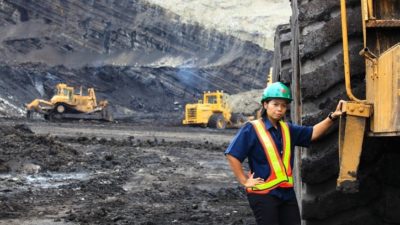Owners of BHP Group Ltd (ASX: BHP) shares got an insight into their company's profitability in the FY25 half-year result.
Perhaps unsurprisingly, the decline in the iron ore price over the past 12 months has caused difficulty for the ASX mining share.
BHP reported that revenue fell 8% to US$25.2 billion, underlying operating profit (EBITDA) declined 11% to US$12.4 billion, and underlying attributable profit declined 23%.
If it weren't for the 44% rise of the copper division's underlying EBITDA to US$5 billion, the result would have looked even worse. The iron ore division saw underlying EBITDA sink 26% to US$7.2 billion.
The financial results in the next few years could be interesting. Hence, let's look at what one broker expects BHP to achieve in the coming years.
First, FY25
Broker UBS noted that BHP has pivoted to growth, and its capital expenditure is on track to lift to $10 billion in FY25, while the dividend payout ratio is trimmed to the 50% minimum.
The broker also pointed out that net debt is creeping up to the top end of BHP's target range due to acquisitions and the Samarco settlement. However, BHP reportedly noted that its leverage is lower than its peers and is comfortable exceeding the top end "temporarily".
UBS also noted that BHP continues to talk down the risk of acquisitions, flagging that its growth is long-dated (to the 2030s).
The broker is expecting weaker iron ore prices over the next year (or longer) to be offset by higher copper prices.
UBS projects that in FY25, BHP could generate US$50.9 billion in revenue and US$9.6 billion in net profit, pay an annual dividend per share of US 98 cents, and increase its net debt to US$14 billion.
Next, FY26
The 2026 financial year is predicted to be significantly stronger for BHP.
Revenue could climb to US$53.7 billion, net profit could rise to US$11.8 billion, and the dividend per share could jump to US$1.17 per share. The balance sheet could start to improve, with the net debt projected to reduce to US$13.3 billion.
Then, FY27
According to UBS' forecasts, the 2027 financial year could be more profitable than FY25 but not as good as FY26.
BHP's revenue could fall to US$50.7 billion in FY27, but profit could be just over US$11 billion. Due to the lower profit, the dividend per share could be reduced to US$1.09 per share. However, the net debt could improve to US$12.6 billion.
After that, FY28
The 2028 financial year could see the mining giant's financials reduce again, according to the UBS predictions.
In FY28, revenue could drop to US$50.1 billion, net profit could drop to US$10.5 billion, and the dividend could be reduced to US$1.03 per share. Its net debt could worsen to US$13.5 billion.
Finally, FY29
The 2029 financial year could see some of the biggest numbers for all of the financial measures as the projects are completed and added to earnings.
In FY29, UBS forecasts BHP could generate US$52.4 billion in revenue and US$11.6 billion in net profit, helping the business pay a dividend per share of US$1.14.
However, the net debt could fall to US$13.8 billion.
Overall, the dividend and net profit aren't expected to do much between FY26 to FY29.









